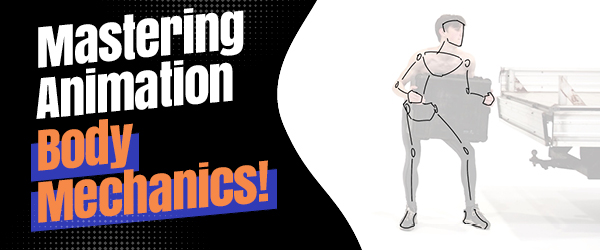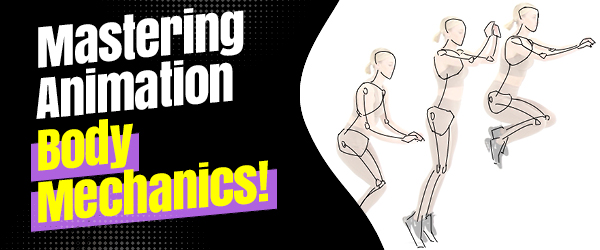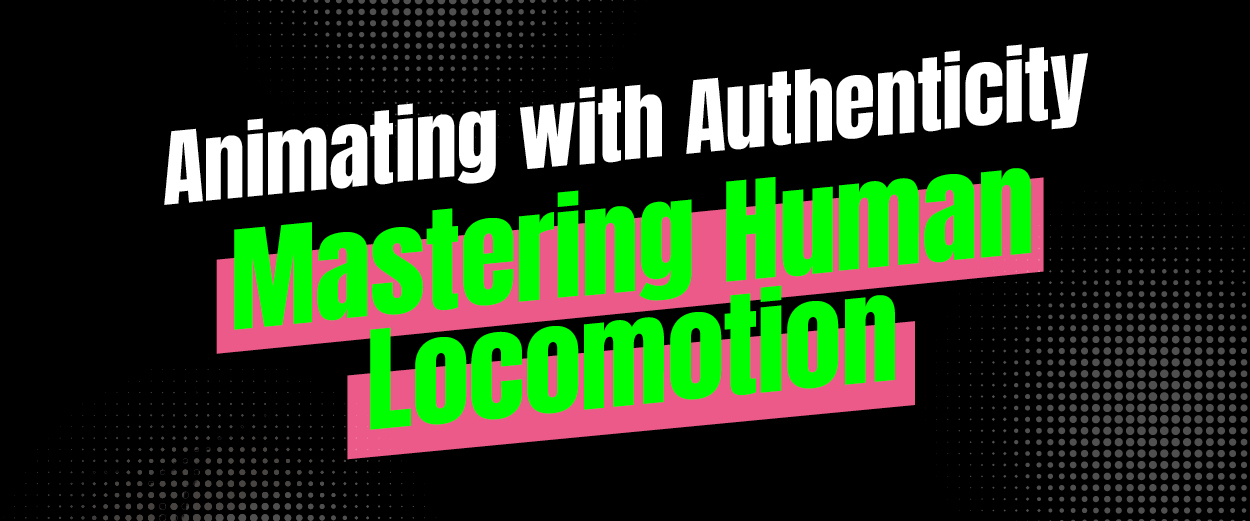Guest post
Author: Jibril Sy.
Jibril Sy is an illustrator and concept artist with a background in storyboarding
and a deep passion for all forms of visual storytelling.
Contact Jibril
Artstation: artstation.com/djbrl
Linkedin: Jibril-sy
Animating Effort - Lift Breakdown
Introduction
Every movement in the realm of animation tells a story, and in many animated scenes, lifting a big object is a crucial moment. It's the heroic battle of lifting a friend, the cautious handling of antiquated objects, or the all-too-common struggle of putting your suitcase above your seat in the plane ! In this article, we will explore the mechanics of weight, balance and movement to portray our favorite stick-person lifting a case, taking it from this:
to this!
Let’s dive in...
Understanding the physics
The animator's canvas in animation is more than just a two-dimensional surface; it's a stage on which the laws of physics are imported and established. Our characters are dynamic creatures that we have to subject to the same principles that govern the real world, not just pixels or drawings, when we tackle the issue of carrying a heavy object. Understanding the interaction between the body and the weight of the object is essential to animating with authenticity in the mechanics of lifting.
For a brief moment, picture someone getting ready to raise a heavy suitcase. The action is started by the legs, which firmly press against the earth. The arms and back do the same, putting forth force to defy gravity. Balance is maintained by using the core muscles, and when the case is lifted, the chest serves as extra support to balance the object. Making all these events transpire in the animation is crucial to portray the movement and will be the foundation of our sequence.
The first phase is pretty straight-forward and it's all about getting into a stable position and having a firm grip on the object. Depending on how extreme we want the movement to be, we can add extra anticipation and tension to this part of the sequence, but we're not pulling out Excalibur here ! It's just a suitcase.
We then quickly follow up with the liftoff which is a great opportunity for a little bit of squash-and-stretch ! By subtly extending the length of the arms, legs and expanding the size of the chest, we capitalize on that moment of intensity to make our animation more fluid and lead into the apex of the sequence.
This phase focuses on maintaining balance and control, as our mannequin shifts the weight of the suitcase around. The core muscles come into play, stabilizing the character as they grapple with the burden, another opportunity for additional tension.
The final phase is all about recovery. After successfully carrying the heavy object, our mannequin places it on the back of the truck, experiencing a short moment of relief. It's an essential part of the animation because it adds a sense of realism and satisfaction to the sequence. The character's posture changes, and their body relaxes as they complete this arduous task.
Phew, that was a lot. Let's rewind the tape a little bit !
Always plan the curves
"Curves in animation are not just lines on paper; they're the soul of
movement. They bring characters to life, making them more than just drawings.
A well-crafted curve can make an audience feel the weight, the emotion,
and the very essence of the character's journey."
- Chuck Jones
When it comes to planning out movement, one of the animator's most potent tools is the trajectory of the character and the mastery of curves. In life as in animation, every vector of movement, head, chest, arms is moving along a path that can be utilized to plan out the frames that will define the rhythm of the movement. You can think of it almost as a wireframe.
As our character raises the heavy object, the curves come into play. Imagine the initial lift – it's not a sudden jerking motion; it's a gradual acceleration, with the arms leading the charge followed by the hips and chest. Similarly, when the object reaches its highest point and starts its descent, it doesn't just drop abruptly; it's a smooth deceleration, and we can draw the curve of the movement before going ahead and drawing the in-betweens.
By planning the character's trajectory, we can keep up with all the different vectors of movement and place our frames at the best position.
Telling a story through timing
Timing is always what ties everything together, and it's what truly brings these three phases to life ! It's the silent conductor that dictates the rhythm of our animation orchestra. We emphasize key moments such as the liftoff, that in this case helps the viewer feel the weight of the object and the balance of the character being shifted back and forth.
The way we utilize it here is by taking reference to real world physics. When our character exerts that initial burst of strength, we compress time and accelerate the movement the same way someone would use some degree of explosivity to execute a liftoff.
At the apex of the lift we do the opposite, slowing down to emphasize the movement while an actual person lifting an object would slow down to recover their balance and prepare for landing. Timing accentuates the triumph, making the viewer feel the weight of the object and showing how the lifter could just as easily have tipped off the other way !
As the character begins their recovery phase, timing can be accelerated, signifying the completion of the task and their transition to a more relaxed state as well as the weight of the object rushing back to the ground as soon as force stops being exerted on it to remain in the air. It's in these subtleties of timing that we capture the heart and soul of the animation, making the audience not just see but also feel the effort, balance, and ultimate success in lifting the heavy object. Timing is the unseen storyteller !
Conclusion
Lifting a heavy object is a meticulous balancing act where weight and balance come into play, and animating it is all about understanding the mechanics at play and reproducing them on a canvas using the tools of the animator. However it's just as important, if not more, to always keep in mind the narrative and story we want to convey through our animation in order to take from faithful to lifelike.



